Reviews
Freddie Francis
UK, 1974
Credits
Review by Jonathan Foltz
Posted on 26 December 2012
Source DivX
Categories Rock Follies II
“I leave altogether my ties to your world.”
—Count Downe, Son of Dracula
Is it the supposed deathlessness of rock icons that makes their self-destruction such engrossing spectacle? Perhaps we want to be convinced that our fantasies of debauched celebrity could never be simply lived, but only suffered as inhuman, macabre decadence. Rock stardom, the magnet of our morbid desire, is gothic by nature, sustaining Faustian myths of thwarted mortality in its pageantry of hypnotic debasement and exhibitionist rapture.
One might think that this dynamic would translate easily into cinematic terms: not necessarily, but Son of Dracula—Harry Nilsson and Ringo Starr’s not-quite horror movie— is more fascinating than it really has a right to be. Behind its nonsense plot, wooden dialogue, non-existent characterization, silly costumes, and wildly uneven pacing, Son of Dracula is a film with a self-defeating sense of ambition and a strangely winning sense of the gratuitous (not to mention absorbing music sequences).
Consider this: it is a film featuring Dr. Frankenstein, Van Helsing, Merlin (!!!), vampires, wolfmen, mummies, and other creatures of the “netherworld” that spends most of its time developing a slow-burning ethical dilemma about whether, with his enchanting vampire powers, Count Downe will ever have the capacity to truly “love” as a mortal human being. This narrative choice entails many drawn-out scenes of dialogue, explaining arcane made-up science and the mystical rules of the “netherworld,” instead of showing more scenes of Count Downe and friends jamming at the local club or out in the cemetery raising hell (which, I presume, would have made a much more enjoyable film). Did Nilsson and Ringo, along with veteran director Freddie Francis, make an unsuccessful horror film? Perhaps, but it seems more likely that Son of Dracula’s contorted plot and strangely confused structure is the artifact of genuine ambivalence about satisfying the audience, and a half-hearted desire to renounce the pleasures of performance altogether.
Son of Dracula is the story of Count Downe, the only surviving son of the famous Count Dracula, who—one hundred years after his father’s murder by a mysterious assassin—is scheduling his “coronation” as king of the netherworld (apparently, the netherworld is an incredibly organized group!). We soon gather that the creatures of the netherworld—ghouls, vampires, but also mad scientists like Frankenstein—were originally the creations of Merlin, who sits around in his large estate making calculations about distant stars in order to form the basis of his astrological predictions. (Why connect the gothic icons of horror cinema with the bearded wizardry of Arthurian legend? Wrong question.)
In any case, Count Downe’s impending coronation is thrown into doubt by the scheming designs of Dr. Frankenstein—played here by the strange and stagey Freddie Jones—who intends to steal the throne (of the netherworld, mind you) from the House of Dracula. At the same time, Count Downe has been having recurring dreams in which he tries to “neck” with a woman but is repelled by her cross. For reasons not clarified by the dreams themselves, he finds that the prospect of immortality feels more like a burden to him. He wants to be human, to be able to love, to feel the sting of vulnerability. Dr. Frankenstein offers to perform the operation, devampirizing him, but also making him immortal at the same time (or so Downe thinks; unbeknownst to him, Frankenstein’s operation will actually kill him).
Will Count Downe decide to be crowned king, assuming the mantel of his father? Will he decide on the “humanizing” operation which, by some magic trick of the stars, must also happen on the same day foretold for the coronation? Will Dr. Frankenstein succeed in his plot to overthrow the netherworld? Or will yet another mysterious doctor—Dr. Van Helsing (who may also be out to kill the Count)—and his bewitching assistant “Amber,” throw a wrench in Frankenstein’s plot by beating him to the punch? What about the obscure “transfusion device” which both Frankenstein and Van Helsing need for their operations, and which is the centerpiece of a sublimely silly heist sequence as the two simultaneously try to steal it from a local hospital?
These are among the questions which Son of Dracula asks us to take absolutely seriously. I imagine that Starr and Nilsson were having quite a lot of fun during the shooting of the film, but very little of this makes it on the screen. The long scenes of awkwardly scripted and ineptly delivered dialogue have been completely drained of drama; every encounter serves only as an occasion to convey, in the most straightforward and unambiguous way, the tedium of the film’s narrative information. A typical exchange between Merlin and Count Downe is this humorless recital of scheduling and foreshadowing:
Merlin
You appreciate that the time and place of your coronation is of the utmost importance.Count Downe
I do.Merlin
I have acquired a vast building for our purpose upon the very spot the heavens have ordained.Count Downe
But of course, Merlin.Merlin
It has already been advertised as a museum of the occult. We shall exhibit facsimiles of some of our friends. It is, of course, a perfect meeting place for those very people.Count Downe
Perfect.
Dialogue like this - so formally scripted, precise, blas´ - gives the unskilled actors nowhere to hide. They are quickly hunted back to the embarrassment of their obvious lack of depth. No amount of makeup, costumes, or wigs can compensate for the formulaic clumsiness of this scene.
Fortunately, not all of the film is so painful. In one wonderful scene, Nilsson’s Count Downe interrupts a teenage couple who have been making out while listening to T-Rex. After killing the boy, Count Downe turns to the girl fangs out, but pauses to start the record over again before biting in. Nothing is more rock’n’roll than the seeing Count Downe’s victim—under the spell of his vampiric charm—moan to the music as he gives her a deathly kiss. In scenes like this, horror tropes and Nilsson’s debauched rock ethos work nicely in tandem. Scenes of Count Downe playing “Knockin’ at my Door” in a London club (backed by John Bonham, Pete Townshend and other luminaries) or rocking out at a gala held for the netherworld (this time with Keith Moon on drums!) are other standouts. The camera slowly circles the performers, meticulously documenting the chaos with slow zooms into Nilsson’s transfigured face, which seems utterly possessed by evil spirits, holding open his vampiric mouth as if in anticipation of a warm neck. In these scenes, too, the parallel between rock performance and gothic narrative seems absolutely justified. To be able to play like this, we feel, is to taste the world’s dark magic and feed on its intoxicating disorder.
At another moment, Count Downe is taking a walk through 1970’s London, with his silly cape and all, and comes across a record shop selling Nilsson’s own Son of Schmilsson album (with its vampire cover-art). It’s a nice wink, suggesting the level of self-awareness and self-deprecating good humor underpinning the film’s goofy mythology. But the raucous scenes of seduction, bitterness, and noise don’t actually ruffle the film’s dour plotting and overly serious veneer.
Son of Dracula is a film about the renunciation of rock immortality in favor of some more genuine human interaction. In the end, Count Downe falls in love with Van Helsing’s assistant, Amber, and sacrifices his netherwordly powers for a chance at real love. This romantic strain is consistent with Nilsson’s music, which oscillates between ironic, hard-edged screeds and sentimental ballads (such as “Remember,” which serves as one of the film’s major themes). Still, it’s particularly unsatisfying in the context of the film because we are asked to identify with Count Downe’s “destiny,” the future of the netherworld, his inexplicable melancholy, et cetera: emotions and problems entirely unjustified by the film’s wooden execution.
This doesn’t mean that there aren’t isolated pockets of giddy fun to be had here. In one supremely goofy sequence, Merlin sees through his crystal ball that Amber is imperiled and magically sends his cat to intercede. “Prepare to be transported!” he intones over his kitty before it disappears, reappearing in the midst of the scuffle in time lick a man’s face and wander off-screen. In another, a midget named Igor and a mummy assist Dr. Frankenstein in stealing the “transfusion device” from a hospital, while Van Helsing and a crew of motorcycled henchmen follow in pursuit. What sort of movie has this become? The experimental, hybrid nature of the film’s style nearly redeems it—if only it were more fun to watch Nilsson and Ringo fumble their way through the dialogue!
Viewing the film through the lens of Nilsson’s career might help contextualize it (anyone looking for more information about the film should visit fortheloveofharry.blogspot.com, a priceless Nilsson shrine). Filmed shortly after the Son of Schmilsson sessions, Son of Dracula finds the singer at the peak of his career, and reflects a deep uncertainty as to the value of fame. However much he wanted to become the “fifth Beatle,” and despite his amazing talents, Nilsson was never going to attain that kind of notoriety. Son of Dracula is a film about celebrity borne at once out of a celebration of its excesses and a despair of its illusions. There is no question that, from a cinematic perspective, the excesses are more interesting, but the desperate impulse to reject a fate that will never choose you does carry a kind of negative charm. The following years would see Nilsson release a bafflingly sentimental album of crooner standards, as well as his dark, masterful collaboration with John Lennon, Pussy Cats. Nilsson, it would seem, was bent on self-destruction, but _Son of Dracula remains as document of his power as a performer, his desire for an audience, and his willingness to leave them both behind.
More Rock Follies II
-
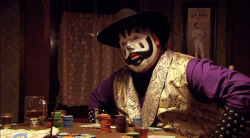
Big Money Rustlas
2010 -
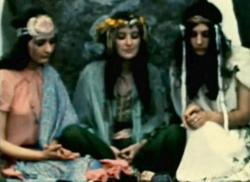
Be Glad for the Song Has No Ending
1970 -
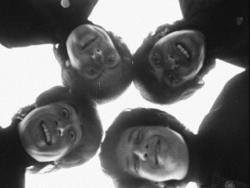
The Rutles: All You Need is Cash
1978 -
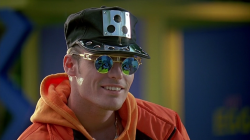
Cool As Ice
1991 -
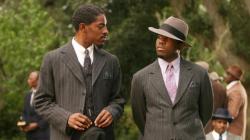
Idlewild
2006 -
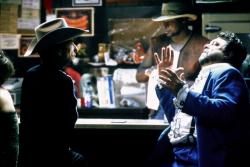
Masked and Anonymous
2002 -
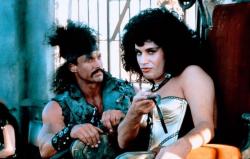
Never Too Young to Die
1986 -

Leningrad Cowboys Go America
1989 -
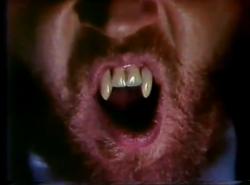
Son of Dracula
1974 -
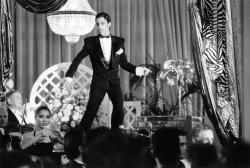
Under the Cherry Moon
1986 -
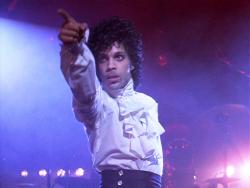
Purple Rain
1984 -
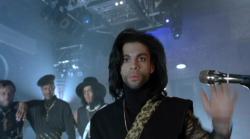
Graffiti Bridge
1990
We don’t do comments anymore, but you may contact us here or find us on Twitter or Facebook.



